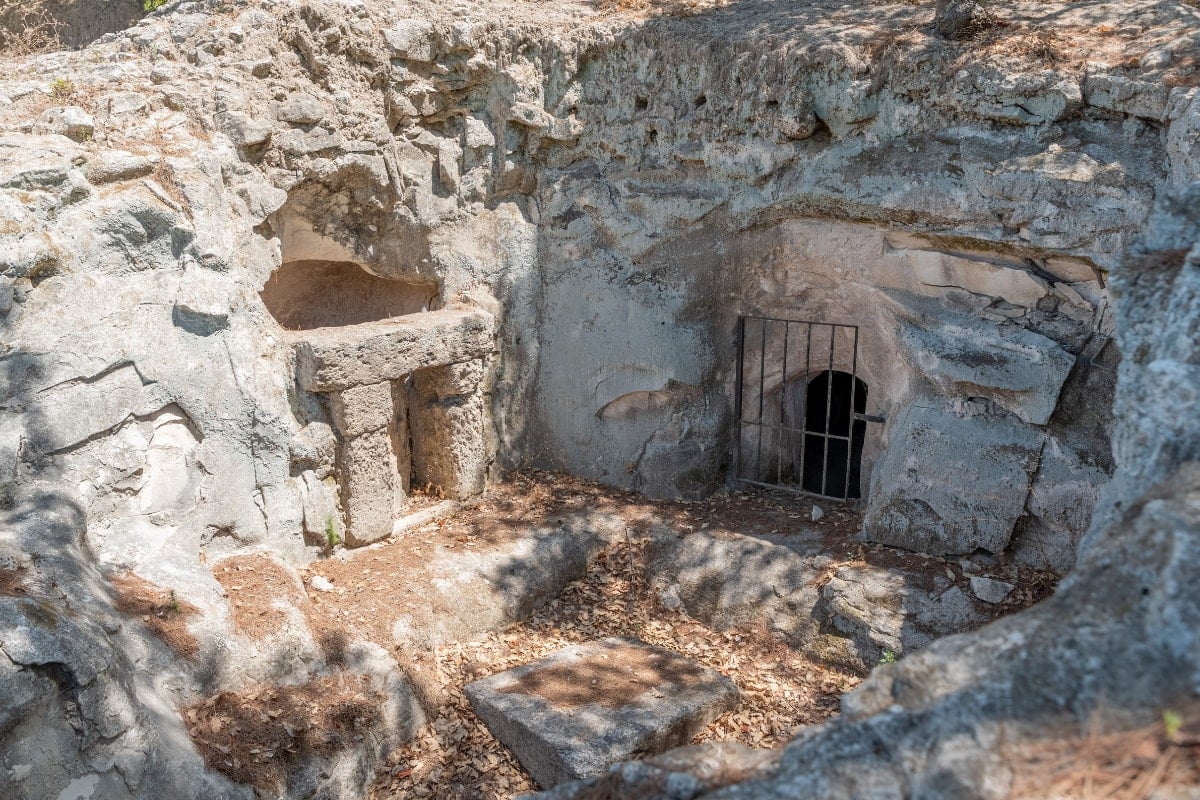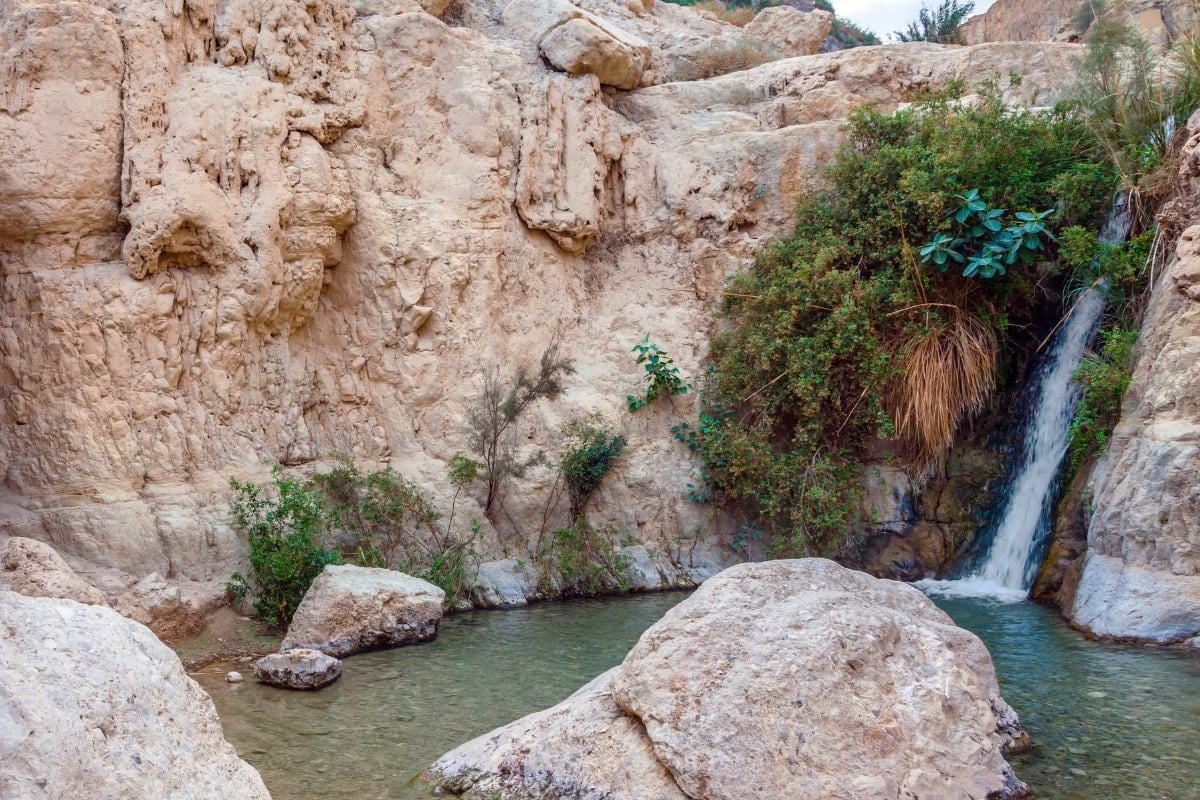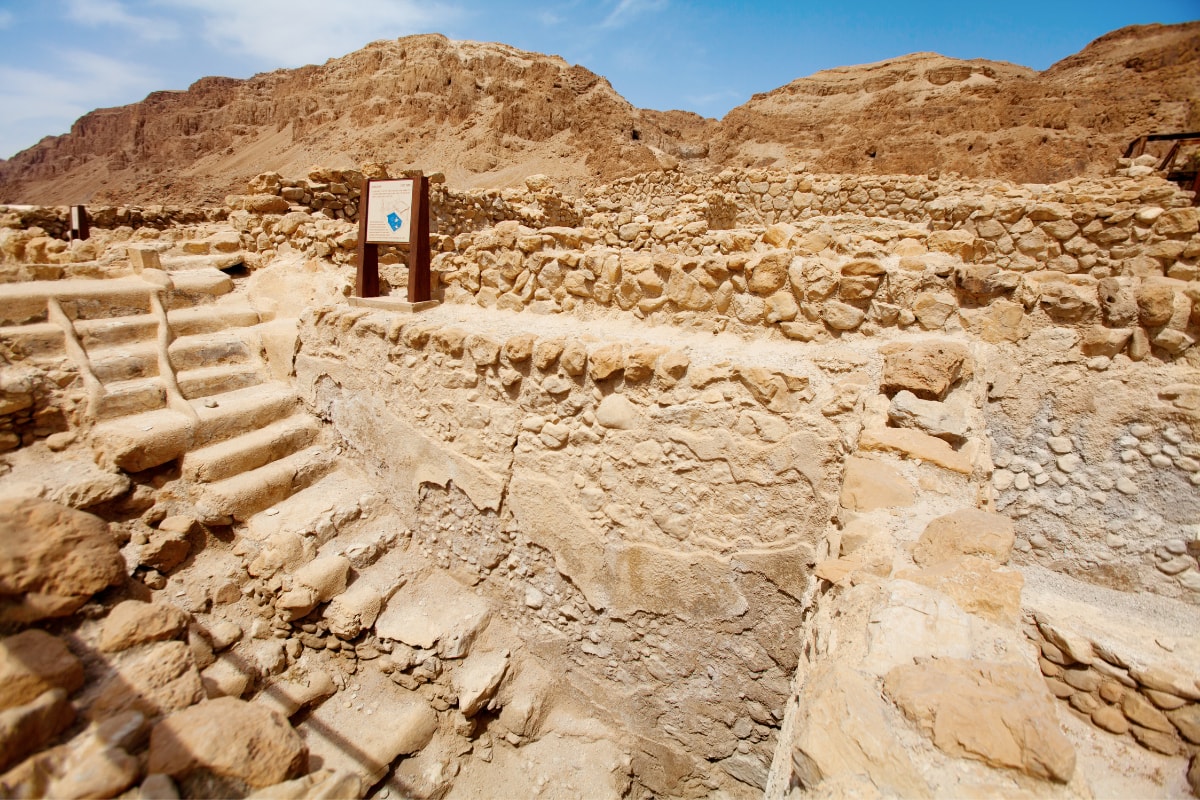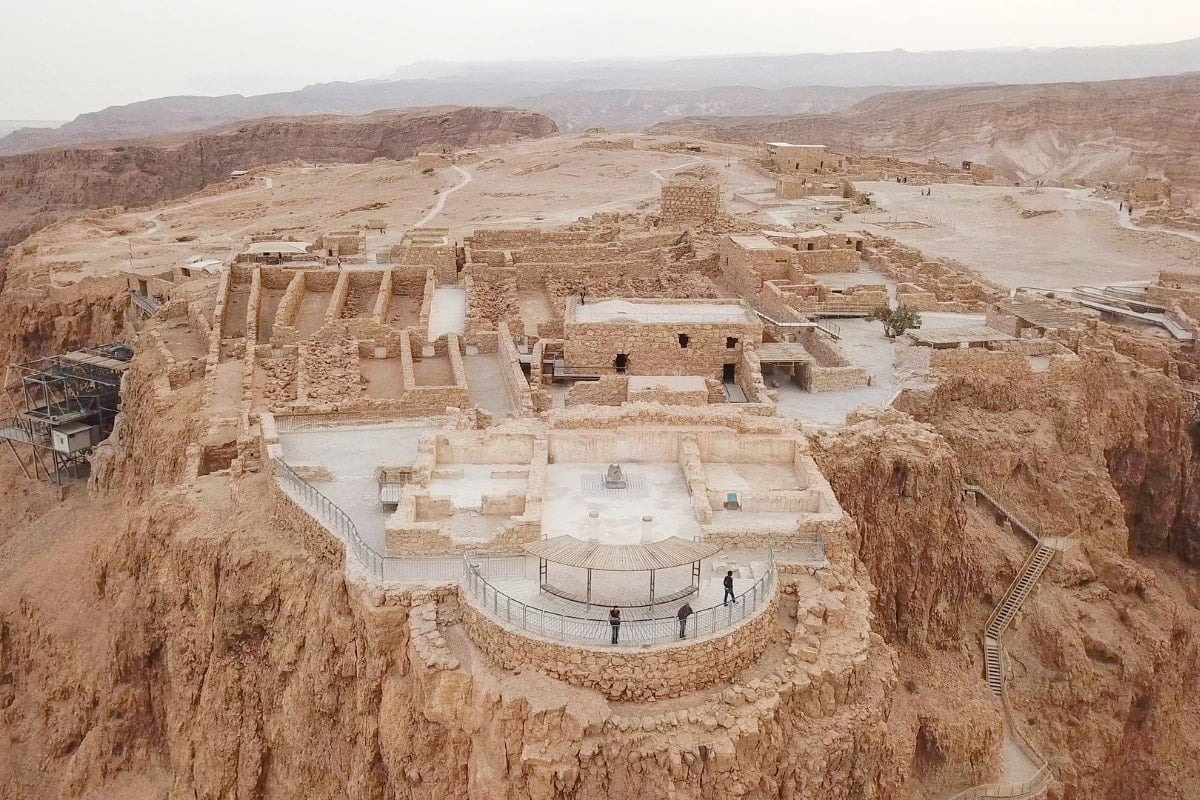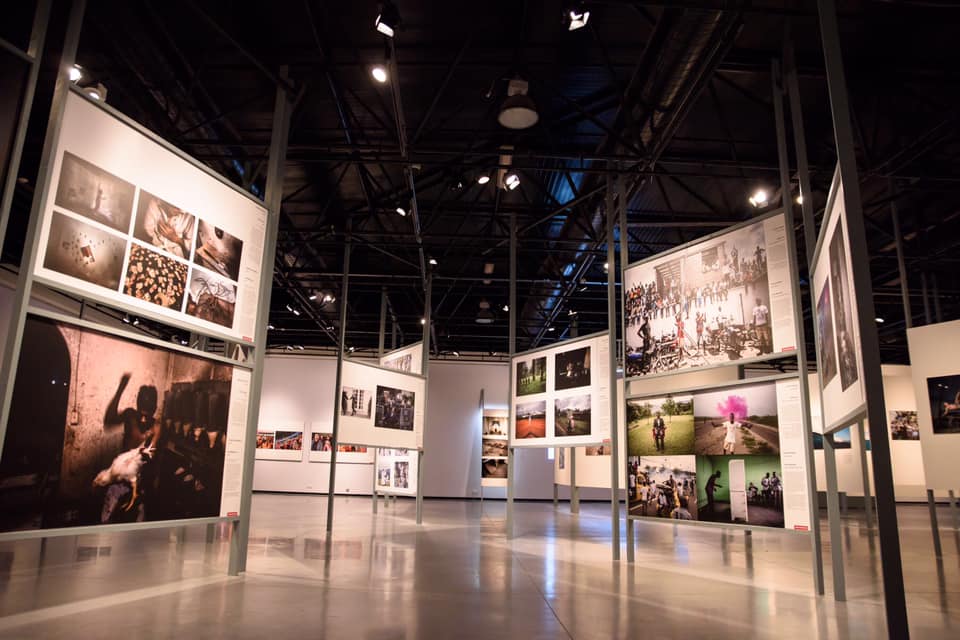Beit She’arim is the current name for the ancient Jewish town of Bet She’arāyim, also known as Kfar She’arāyim. Made popular by its necropolis, it is now known as Beit She’arim National Park.
Site Tag: Archeology
Dead Sea
The Dead Sea is a salted lake bordered by Jordan to the east and the West Bank to the west. It lies in the Jordan Rift Valley and its main tributary is the Jordan River. Its surface and shores are 430.5 meters below sea level, Earth’s lowest elevation on land.
Ein Gedi National Park
Ein Gedi, literally meaning “spring of the kid” is an oasis and a nature reserve in Israel, located west of the Dead Sea, near Masada and the Qumran Caves. In 2016, Ein Gedi was listed as one of the most popular nature sites in the country and attracts about one million visitors a year.
Qumran National Park
Qumran is an archaeological site in the West Bank managed by Israel’s Qumran National Park. It is located on a dry marl plateau about 1.5 km from the northwestern shore of the Dead Sea and lies near the Israeli settlement and Kibbutz of Kalya.
The Hellenistic period settlement was constructed during the reign of John Hyrcanus (134–104 BCE) or somewhat later, was occupied most of the time until 68 CE and was destroyed by the Romans possibly as late as 73. It is best known as the settlement nearest to the Qumran Caves where the Dead Sea Scrolls were hidden, caves in the sheer desert cliffs and beneath, in the marl terrace. The principal excavations at Qumran were conducted by Roland de Vaux in the 1950s, though several later unearthings at the site have since been carried out.
Israel’s Nature and Parks Authority took over the site following the end of the 1967 war, when Israel occupied the West Bank and seized Qumran. Israel has since invested heavily in the area to establish the Qumran caves as a site of “uniquely Israeli Jewish heritage”.
Masada National Park
Masada is an ancient fortification in the Southern District of Israel, situated on top of an isolated rock plateau akin to a mesa. It is located on the eastern edge of the Judaean Desert, overlooking the Dead Sea 20 km (12 mi) east of Arad.
Herod the Great built two palaces for himself on the mountain and fortified Masada between 37 and 31 BCE.
According to Josephus, between 73 to 74 CE, Roman troops invaded Masada during the end of the First Jewish-Roman War. This siege came to an abrupt end following the mass suicide of the 960 Sicarii rebels who were in hiding there. However, according to Kenneth Atkinson, there is no archaeological evidence that Masada’s defenders committed mass suicide.
Masada is one of Israel’s most popular tourist attractions. From 2005 to 2007 and 2009 to 2012, it was second-most popular behind the Jerusalem Biblical Zoo, and currently attracts around 750,000 visitors a year.
The cliff of Masada is, geologically speaking, a horst. As the plateau abruptly ends in cliffs steeply falling about 400 m (1,300 ft) to the east and about 90 m (300 ft) to the west, the natural approaches to the fortress are very difficult to navigate. The top of the mesa-like plateau is flat and rhomboid-shaped, about 550 m (1,800 ft) by 270 m (890 ft). Herod built a 4 m (13 ft) high casemate wall around the plateau totalling 1,300 m (4,300 ft) in length, reinforced by many towers. The fortress contained storehouses, barracks, an armory, a palace, and cisterns that were refilled by rainwater. Three narrow, winding paths led from below up to fortified gates.
Eretz Israel Museum
The Eretz Israel Museum is a historical and archeological museum in the Ramat Aviv neighborhood of Tel Aviv. Established in 1953, the museum has a large display of archaeological, anthropological, and historical artifacts organized in a series of exhibition pavilions on its grounds. Each pavilion is dedicated to a different subject: glassware, ceramics, coins, copper, and more. The museum also has a planetarium. The “Man and His Work” wing features live demonstrations of ancient methods of weaving, jewelry and pottery making, grain grinding, and bread baking. Tel Qasile, an excavation in which 12 distinct layers of culture have been uncovered, is on the grounds of the museum.
At The Borders Of Memory
Embark with us on a wondrous journey through 1000 years of Jewish cultural heritage in Spain.
Following years of research and fresh investigation, this is a heritage route unlike any other in Spain today. Guests will be delighted by intimate dining in a 12th century patio, private concerts, access to expert led tours & panels & luxury accommodations.
From countryside and city, food and memory, exile and belonging, join authors, experts, chefs & musicians on this exclusive journey of a lifetime.
“At The Borders of Memory” May 11-17, 2020. Limited to 25 participants.
Tel Beer Sheva National Park
Beer Sheva is mentioned numerous times in the Tanakh, often as a means of describing the borders of the Land of Israel, extending from “Be’er Sheva to Dan” (see Judges 20:1-3, I Samuel 3:19-21). The name is derived from the Hebrew Be’er meaning a well, and Sheva meaning “to swear an oath.”
Tel Be’er Sheva was excavated from 1969 to 1976 by the Tel Aviv University Institute of Archaeology, directed by Prof. Yohanan Aharoni, except for the last season which was led by Prof. Ze’ev Herzog. These excavations were directed towards uncovering the Iron Age Israelite city at the site. Excavations were renewed by Prof Herzog between 1993 and 1995 in order to complete the uncovering of the town’s water system.
The site was renovated by the Israel Nature and Parks Authority in 1990. In 2003, its water system was opened to the public. The excavated town is now part of the Tel Beer Sheva National Park.
Images by Mboesch via WikiMedia
